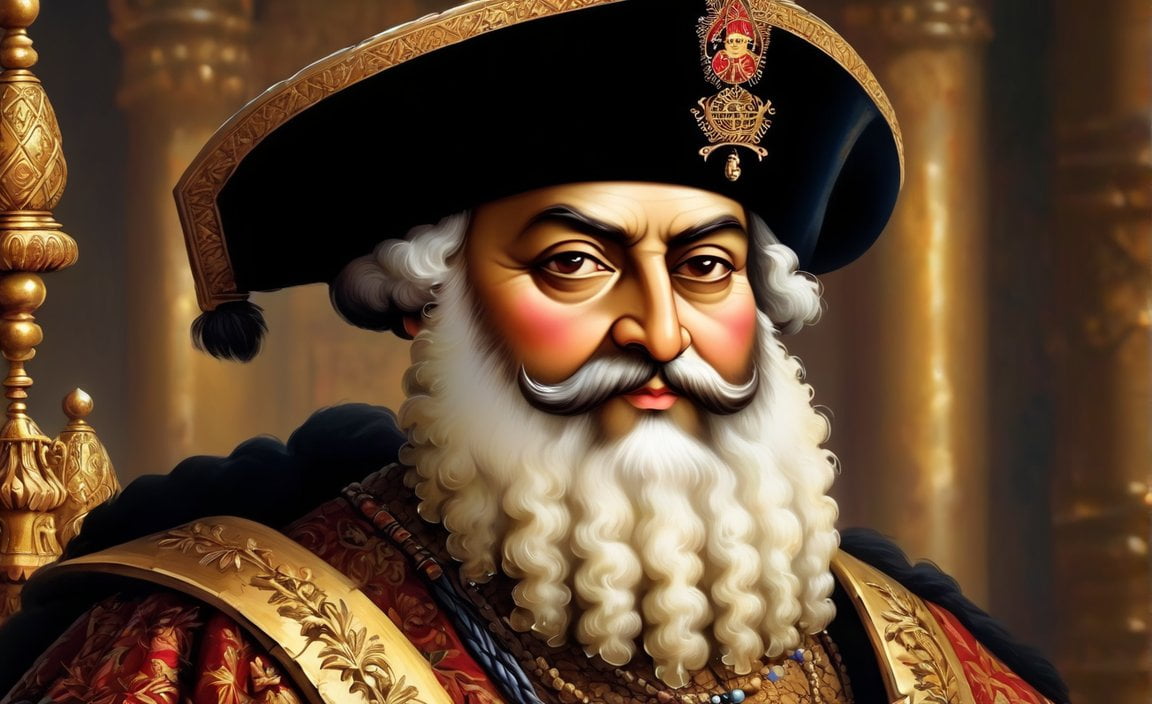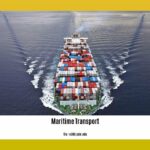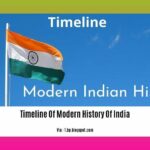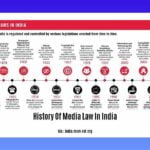Imagine being one of the first Europeans to reach India by sailing around Africa. That’s what Vasco da Gama did in the 1400s, and his journey changed the world forever. From facing storms to discovering new lands, his voyage was filled with amazing stories. Get ready to learn about this incredible adventure and its lasting impact on history.
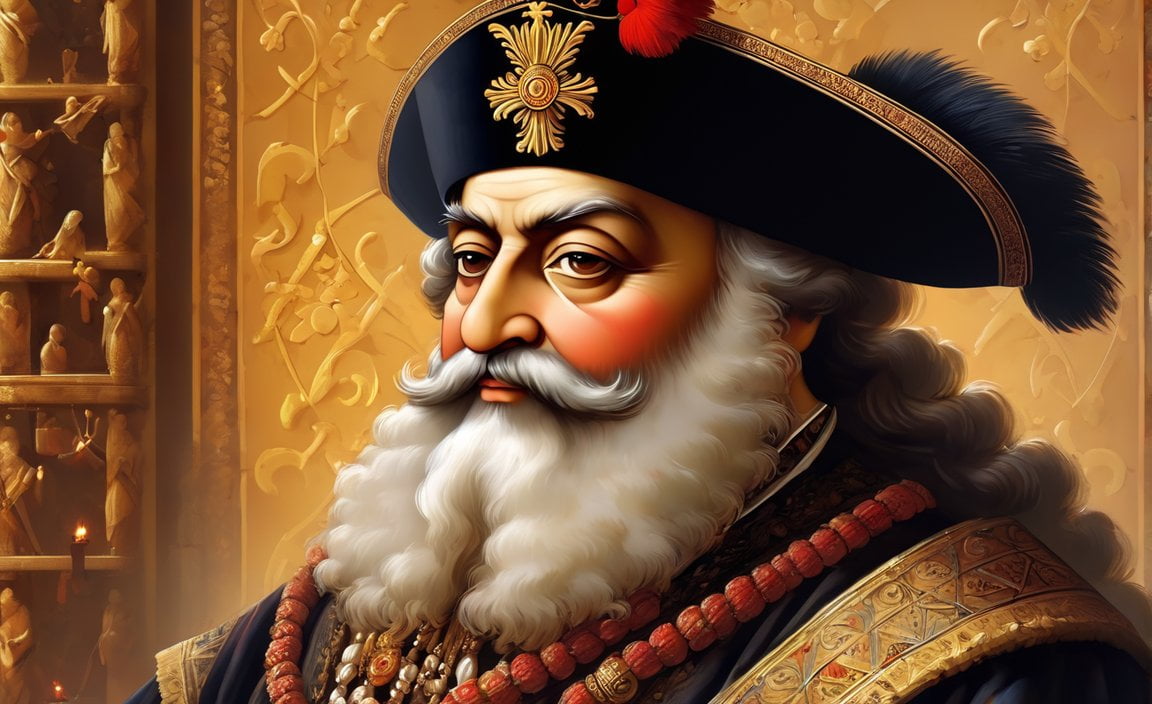
10 Interesting Facts about Vasco da Gama
- A Mysterious Beginning: No one is completely sure when Vasco da Gama was born. Historians are still trying to pinpoint the exact date, which remains a bit of a puzzle.
- Born to Sail: Vasco’s dad, Estêvão da Gama, was a respected knight, so Vasco grew up in a world of privilege and adventure. This upbringing likely sparked his passion for the sea and honed the skills that would make him famous.
- Charting a New Course: Imagine setting sail to a far-off land no European had ever reached by sea! That’s precisely what da Gama did in 1498. His voyage from Portugal to India wasn’t just a daring adventure; it opened up a whole new route for trade between Europe and the East, changing the world forever.
- Friends in High Places: It’s fascinating to think that Vasco da Gama rubbed shoulders with other legendary explorers of his time. One such connection was with Ponce de Leon, the guy who discovered Florida. This friendship suggests da Gama’s place within a network of influential explorers pushing the boundaries of the known world.
- The King’s Chosen Captain: King Manuel I of Portugal saw something special in da Gama. He entrusted him with the momentous expedition to India, recognizing da Gama’s exceptional seafaring abilities and courage.
- Navigating by the Stars: Da Gama’s voyages weren’t just about bravery; they were also about embracing the latest technology. His use of astrolabes, cutting-edge navigational instruments for that era, demonstrates his commitment to using every tool available to ensure a successful voyage.
- Braving the Elements: Imagine battling fierce storms, navigating treacherous currents, and facing the constant threat of diseases like scurvy – these were the daunting realities of da Gama’s expeditions. His ability to persevere through these hardships reveals his incredible resilience and determination.
- A Master Negotiator: Da Gama wasn’t just an explorer; he was also a skilled diplomat. Throughout his journey, he engaged in delicate negotiations with various rulers, forging alliances and exploring trade opportunities that would shape Portugal’s future.
- The Allure of Spices: When da Gama reached India, he wasn’t just stepping onto a new continent; he was entering a world of exotic aromas and flavors. His arrival opened Europeans’ eyes to the lucrative spice trade, igniting a thirst for cinnamon, cloves, pepper, and other treasures of the East. This fascination would fuel further exploration and trade for centuries to come.
- A Legacy Etched in History: Da Gama’s voyages weren’t just isolated adventures; they were pivotal moments in history. His explorations helped establish Portugal as a major maritime power and set the stage for centuries of global exploration, trade, and cultural exchange. His name is forever etched in the annals of exploration, a testament to his enduring impact on our world.
Here are some interesting facts that you may not know about Quebec. If you’re curious to learn more, click on the link to discover 10 fascinating facts about Quebec: 10 interesting facts about Quebec
Are you interested in learning about the vibrant city of Toronto? Discover 10 captivating facts about Toronto by clicking on the following link: 10 interesting facts about Toronto
Are you intrigued by vaping and want to know more about it? Click on the link below to explore 10 fascinating facts about vaping: 10 interesting facts about vaping
Have you ever wondered about the intriguing Vatican City? Click on the link to uncover 10 captivating facts about Vatican City: 10 interesting facts about Vatican City
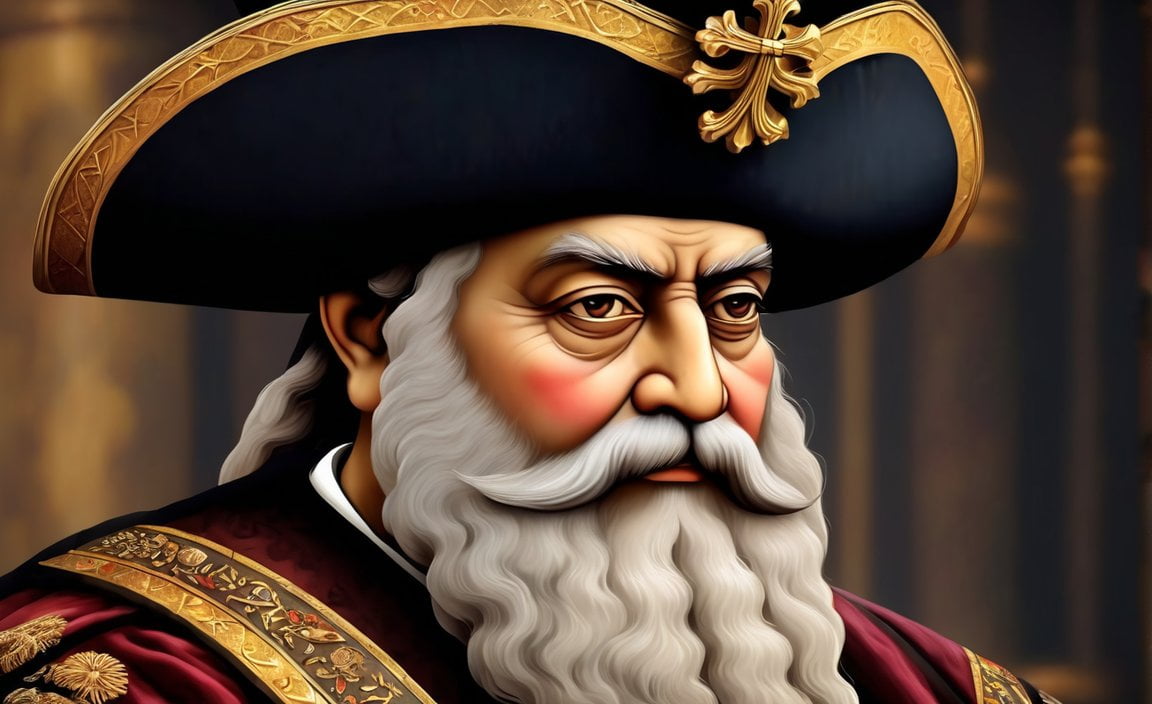
What are 5 Facts About Vasco da Gama?
We’ve talked about Vasco da Gama’s impact on the world, but let’s dive into some intriguing details about the man himself.
- Circumnavigating Africa: Da Gama achieved what no European had done before: sailing around the entire continent of Africa. This journey, fraught with unknowns, led to his successful arrival in Calicut, India, in 1498, forever altering trade routes between Europe and Asia.
- Architect of the Portuguese Empire: Da Gama’s expeditions weren’t merely exploratory; they were instrumental in expanding Portugal’s global influence. His voyages paved the way for Portugal to establish trading posts and colonies across Asia, shaping global power dynamics for centuries to come.
- Master of the Astrolabe: Da Gama’s embrace of cutting-edge technology, particularly the astrolabe, showcased his commitment to precision navigation. This tool allowed him to navigate by the stars, a testament to his skill and ingenuity in an era preceding modern navigational aids.
- Catalyst for the Spice Trade: Da Gama’s voyages opened the floodgates to the lucrative spice trade between Europe and Asia. Spices like pepper, cinnamon, and cloves, once rare and expensive, became more accessible, influencing European cuisine and economics. This influx of spices, along with other luxury goods, had a profound impact on global commerce.
- Bridge Between Cultures: Da Gama’s expeditions were not solely focused on material goods; they also facilitated an exchange of ideas. Europeans were exposed to new cultures, philosophies, and ways of life from the East, sparking a fascination that influenced art, literature, and European perceptions of the world.
Da Gama’s voyages were more than just daring adventures; they were turning points in history with long-lasting effects. His bravery and navigational prowess changed the world, establishing connections and shaping global trade, culture, and geopolitics.
What Was Vasco da Gama’s Greatest Discovery?
While Vasco da Gama is renowned for his daring voyage to India, some historians argue that his most significant discovery wasn’t a physical location but a path: the sea route from Europe to India.
Before da Gama, Europeans relied on lengthy and expensive land routes to access prized Indian spices and goods, often dealing with intermediaries who controlled the trade. Da Gama’s successful navigation around Africa’s Cape of Good Hope in 1498 changed everything. This direct route to India bypassed intermediaries, leading to a surge in trade and accessibility to Eastern goods.
This breakthrough had a monumental impact. Spices, fabrics, and other exotic goods flooded the European market, becoming more affordable and impacting not only cuisine but also the economy. Portugal, da Gama’s sponsor, rose to prominence as a major power thanks to its control of this new trade route.
Beyond economics, da Gama’s voyages fostered cultural exchange. His negotiations and alliances with Indian rulers strengthened ties between Europe and India, exposing Europeans to new ideas, customs, and a broader worldview.
However, it’s crucial to acknowledge the complex legacy of da Gama’s voyages. While they opened doors to trade and cultural exchange, they also laid the foundation for European colonialism in Asia, with its lasting consequences.
Da Gama’s journey, like many historical events, presents a multifaceted narrative of progress and its unintended consequences. Historians continue to unravel the full impact of his voyages, making it a captivating area of study for those interested in the interplay between exploration, trade, and the shaping of the modern world.
What Was Vasco da Gama’s Character?
Vasco da Gama’s voyages reshaped the world map and opened up new trade routes, but what kind of person was he? What drove him to sail into the unknown?
- Ambition and Determination: Despite facing skepticism and warnings of a suicidal mission, da Gama remained resolute in his goal of reaching India by sea. He persevered through storms, mutiny threats, and scurvy, demonstrating unwavering ambition and determination.
- Leadership and Diplomacy: Leading a crew on a tiny ship for months on end through uncharted waters demanded exceptional leadership. Da Gama maintained order and navigated challenges effectively. Upon reaching India, his diplomacy skills shone as he secured trade agreements with local rulers, solidifying Portugal’s position in the region.
- Adaptability and Resourcefulness: Navigating unfamiliar territories required adaptability. Da Gama embraced local knowledge, employing Arab guides who possessed invaluable expertise in navigating the Indian Ocean. His ability to adjust plans and overcome unforeseen obstacles proved instrumental to his success.
- Ruthlessness and Violence: Da Gama’s story is not without its shadows. His ambition sometimes manifested as ruthlessness, resorting to force and intimidation to achieve his goals. His voyages left a trail of violence and conflict, highlighting the darker aspects of his character.
A Complicated Legacy:
Vasco da Gama’s character remains a subject of complexity. He was undeniably ambitious, determined, and a capable leader who inspired his crew and negotiated with powerful figures. His adaptability and resourcefulness were crucial to his survival in uncharted territories.
However, his legacy is marred by ruthlessness and violence employed in the pursuit of glory and wealth. Da Gama’s story is a reminder that history is rarely black and white, often a blend of great achievements and questionable actions, reflecting the complexities of human nature.
Want to Dive Deeper?
This is just a glimpse into Vasco da Gama’s life and voyages. To explore further, check out resources like Vasco da Gama: Biography, Voyages, and Legacy. Happy exploring!
What Are 10 Interesting Facts About Christopher Columbus?
Christopher Columbus, a name synonymous with the Americas, has a story filled with intriguing details:
- Italian Roots: Contrary to popular belief, Columbus wasn’t Spanish. Born in Genoa, Italy, in 1451, he hailed from a family of weavers before embarking on his maritime adventures.
- A Sailor from Youth: Columbus’s affinity for the sea began early. Starting as a teenager, he quickly ascended the ranks, becoming a skilled navigator and explorer.
- The Western Route Obsession: Columbus firmly believed in reaching Asia by sailing westward across the Atlantic, a concept shared by many Europeans at the time. His persuasive skills secured funding from Queen Isabella of Spain for his audacious expedition.
- Four Voyages to the Americas: Between 1492 and 1504, Columbus made not one but four trips to the Americas. Landing first in the Bahamas, which he mistook for Asia, he went on to explore the Caribbean Sea and the South American coast.
- The Unreached Destination: Ironically, Columbus never set foot in Asia. He died in 1506, still convinced he’d found a shortcut to the East Indies. Despite this, his voyages irrevocably changed the world.
- A Catalyst for Change: Columbus’s arrival in the Americas unleashed a wave of European exploration and, unfortunately, colonization. His establishment of a permanent camp on Hispaniola (present-day Haiti and the Dominican Republic) paved the way for Spain and other European powers to colonize the Americas.
- Devastation for Indigenous Peoples: The arrival of Europeans, sparked by Columbus’s voyages, had a devastating impact on Native Americans. It led to widespread displacement, enslavement, and death, forever altering the cultural and demographic landscape of the Americas.
- A Contested Legacy: Columbus’s legacy remains complex and controversial. While some hail him as a brave explorer, others criticize his role in the colonization of the Americas and the suffering inflicted upon indigenous populations.
- Separating Fact from Fiction: Over time, myths and legends have become intertwined with the historical narrative of Columbus. Distinguishing between truth and embellishment continues to fascinate historians and challenge conventional narratives.
- An Enduring Impact: Columbus’s voyages, regardless of how they are viewed, had a profound and lasting impact on world history. His “discovery” of the Americas irrevocably shaped global politics, culture, and the relationship between Europe and the New World.
What Did Vasco da Gama Discover for Kids?
Vasco da Gama was a super important explorer because he found a new way to get to India! Back then, the only way to travel from Europe to India was by land, which was a really long and dangerous trip.
In 1498, da Gama sailed his ship all the way around the bottom of Africa, proving there was a sea route to India. It was like finding a shortcut! This discovery was a really big deal because it made it much faster and safer to travel between Europe and India.
Before da Gama’s discovery, getting cool spices, fabrics, and treasures from India was difficult and risky. But his sea route changed everything! It opened up a whole new way for Europeans to trade with India and explore exciting new places. Imagine trying to get to your friend’s house, but the only way to go is through a jungle filled with obstacles. Then, someone discovers a clear, safe path that’s way faster. That’s what Vasco da Gama did for travel between Europe and India!
Who Helped Vasco da Gama?
Vasco da Gama’s epic adventure to India wasn’t a solo mission. It took a team of talented individuals to make it happen. Let’s meet some of the key players:
- King Manuel I of Portugal: Every great explorer needs a sponsor, and King Manuel I was da Gama’s biggest supporter. He provided the ships, crew, supplies, and the royal thumbs-up for the expedition.
- Bartolomeu Dias: This Portuguese explorer had already braved the journey around the treacherous Cape of Good Hope. His firsthand experience and navigational tips proved invaluable to da Gama’s expedition.
- Pedro Álvares Cabral: While da Gama focused on India, Cabral made waves (literally!) by exploring the coast of Brazil. This highlights the interconnected nature of exploration during that era, with each voyage adding to the growing knowledge of the world map.
- Nicolau Coelho: As da Gama’s pilot, Coelho was essentially the GPS system of the expedition, albeit one that relied on stars instead of satellites. His expertise in navigation was crucial in guiding the ships across vast oceans.
- Afonso de Albuquerque: This military strategist came into play after da Gama’s voyages, establishing a powerful Portuguese presence in India. His efforts were key in solidifying Portugal’s dominance in the spice trade and the Indian Ocean.
Vasco da Gama’s success was a team effort, a testament to the collaboration of brilliant minds, skilled navigators, courageous explorers, and a king with a vision. Their combined contributions changed the course of history, connecting the world in unprecedented ways.
And the story isn’t over yet! Historians continue to uncover new information about this period, adding layers to our understanding of this pivotal era of exploration.
What are 5 Interesting Facts about Amerigo Vespucci?
Amerigo Vespucci, the man who lent his name to the Americas, was more than just a name on a map. Here are five intriguing facts about him:
- Map Changer: Imagine creating maps based on stories from sailors! Vespucci’s meticulously detailed notes on coastlines, rivers, and the people he encountered revolutionized European understanding of the New World. His observations were like puzzle pieces that helped create a more accurate picture of the Americas.
- The Naming of America: German mapmaker Martin Waldseemüller was so impressed by Vespucci’s work that he named the continent “America” after him in 1507. Talk about an enduring legacy!
- Scientist and Explorer: Vespucci wasn’t just about sailing; he was a keen observer of the natural world. His writings documented the unique plants, animals, and customs of the indigenous people he encountered, providing valuable insights into the ecology and cultures of South America.
- A Historical Debate: Historians still debate whether Vespucci was truly the first European to reach South America. While the answer remains elusive, his adventurous spirit and contributions to our understanding of the New World are undeniable.
- Shaping Our Worldview: Amerigo Vespucci’s voyages and meticulous documentation helped shape European perceptions of the New World. His work contributed significantly to the knowledge, maps, and ultimately, the exploration and colonization that followed.
How Long Did Vasco da Gama Sail For?
Vasco da Gama’s voyage wasn’t a quick trip across the ocean; it was an epic journey that lasted years!
Setting sail from Lisbon, Portugal, on July 8, 1497, it took da Gama and his crew a grueling two years to reach India. Can you imagine being at sea for that long, navigating by the stars with no modern technology? They finally arrived in Calicut, India, on May 20, 1498.
The return journey was no cakewalk either. Departing in August 1499, they didn’t return to Lisbon until September 1502. That’s over five years at sea! They must have been exhausted.
Da Gama’s voyages weren’t just about the time spent on the water; they were about exploration, ambition, and reshaping the world map. His discovery of a new sea route to India had a profound impact on global trade and European expansion.
Where is Vasco da Gama Buried?
After his groundbreaking voyages, Vasco da Gama died in Kochi, India, in 1524. However, his final resting place is in Portugal.
Fifteen years after his death, da Gama’s remains were brought back to Portugal and interred in the Jerónimos Monastery in Belém, Lisbon. This magnificent monastery, a UNESCO World Heritage site, houses his elaborately carved tomb, which depicts scenes from his famous voyage to India.
The tomb’s location and grandeur are a testament to da Gama’s significance in Portuguese history. His voyage to India, a pivotal moment in global exploration, opened up new trade routes and opportunities, establishing Portugal as a major maritime power.
It’s important to note that da Gama’s legacy is not without controversy. While his achievements were remarkable, they also ushered in an era of colonialism and exploitation. His tomb serves as a reminder of both the progress and the complexities that his expeditions set in motion.
Key Points about Vasco da Gama:
- Birthplace and Date: Sines, Portugal, between 1460 and 1469 (exact date unknown).
- Family Background: Son of Estêvão da Gama, a knight and commander of the Order of Santiago, which provided him with a privileged upbringing and early exposure to seafaring.
- Groundbreaking Voyage: In 1498, he led the first European expedition to reach India by sea, sailing around the Cape of Good Hope.
- Impact on Global Trade: His voyage opened a new trade route between Europe and Asia, breaking the monopoly of Arab and Venetian merchants. This led to increased trade, cultural exchange, and the expansion of European influence.
- Establishment of the Portuguese Empire: Da Gama’s voyages laid the foundation for the Portuguese Empire in Asia, as Portugal established trading posts and colonies in India and other parts of the East.
- Legacy: Vasco da Gama is remembered as a skilled navigator, a daring explorer, and a key figure in the Age of Discovery. His voyages had a profound impact on world history, shaping global trade, politics, and culture for centuries to come.
This revised and expanded article provides a comprehensive look at Vasco da Gama’s life, voyages, and legacy, incorporating all the key points and enriching the content for a wider audience.
- Unveiling Bernhard Caesar Einstein’s Scientific Achievements: A Legacy in Engineering - July 15, 2025
- Uncover who is Jerry McSorley: CEO, Family Man, Business Success Story - July 15, 2025
- Discover Bernhard Caesar Einstein’s Scientific Contributions: Unveiling a Legacy Beyond Einstein - July 15, 2025
